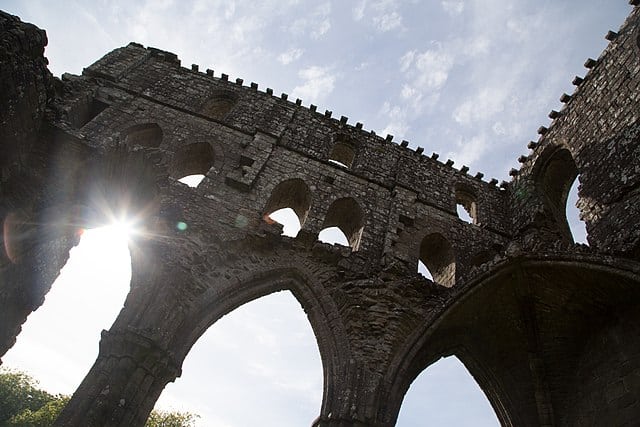
Dundrennan Abbey. Photo by Tom Parnell from Scottish Borders, Scotland – Wikimedia Commons
Top 10 Interesting Facts About Dundrennan Abbey
The reorganization of the Scottish Church, which started in the early 12th century, saw the setting up of many important abbeys, such as the Abbeys in the Scottish Borders. Dundrennan Abbey was one of them.
Dundrennan Abbey was founded in 1142 for Cistercian monks, either by King David I or by the great magnate of the area, Fergus Lord of Galloway. The first monks were brought from the Cistercian order’s northern missionary house at Rievaulx in Yorkshire. The Abbey was home to a community of Cistercian monks for 400 years.
Dundrennan Abbey can be found near Kirkcudbright on the A711, in between New Abbey, home of Sweetheart Abbey, and Wigtown, Scotland’s national book town.
The Abbey is open daily from 1 Apr to 30 Sept between 9.30 am to 5 pm. Admission adult: £6.00, Concession: £4.80 Child aged 5-15: £3.60, Child under 5: free.
1. Dundrennan Abbey was a Cistercian monastery
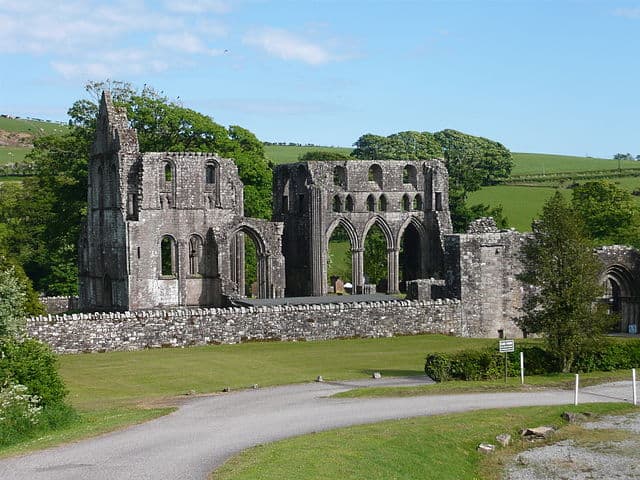
Dundrennan Abbey. Photo by Craig Murphy from Scotland – Wikimedia Commons
Dundrennan Abbey, in Dunderennan, Scotland near Kirkcudbright, was a Cistercian monastery in the Romanesque architectural style, established in 1142 by Fergus of Galloway, King David I of Scotland (1124–53), and monks from Rievaulx Abbey.
Though extensively ruined (the transepts are the main surviving parts), Dundrennan is noted for the purity and restraint of its architecture, reflecting the austere Cistercian ideal.
It is also built from very hard-weathering grey sandstone, so the original architectural forms and moldings are well preserved.
2. Historic Environment Scotland maintains the Dundrennan Abbey today as a scheduled monument.
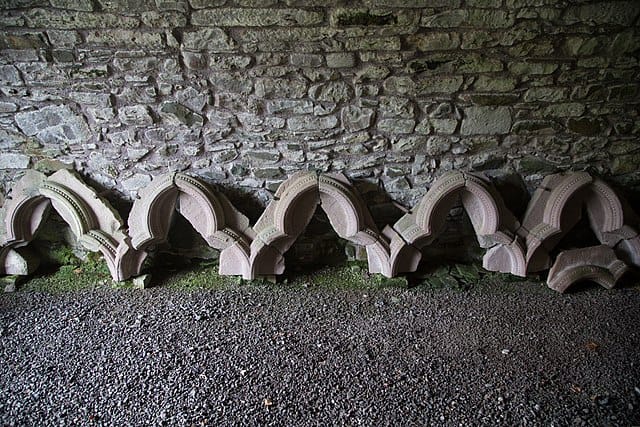
Dundrennan Abbey. Photo by Tom Parnell from Scottish Borders, Scotland – Wikimedia Commons
Mary, Queen of Scots, after the Battle of Langside, spent her final night in Scotland here, in 1568. From neighboring Port Mary, she crossed the Solway Firth to Workington, and shortly after was imprisoned by the English.
In 1587, following the Scottish Reformation, the land was passed to the Crown. The site fell into ruin after it was subsequently used to house livestock. Historic Environment Scotland maintains the site today as a scheduled monument.
3. Dundrennan Abbey is the most accomplished piece of medieval workmanship in the province

Dundrennan Abbey, Scotland. Photo by Hopmans at NL. wikipedia – Wikimedia Commons
Although a mere fragment of its former grandeur, the architecture of Dundrennan Abbey is the most accomplished piece of medieval workmanship in the province. The first two of its three main building phases are almost a textbook demonstration of the transition from round-arched Romanesque to pointed Early Gothic styles.
How building work of this quality was organized and funded in the heart of semi-independent Galloway in the middle and later decades of the 12th century are questions to which we can only dimly perceive the answers.
4. The foundation of Dundrennan Abbey must have been to the mutual political advantage of King David I, Fergus, Lord of Galloway, and the Cistercians themselves.

Dundrennan Abbey. A Cistercian foundation, a daughter house of Rievaulx of 1148. Photo by Gareth Foster – Wikimedia Commons
Its foundation in about 1142 as a daughter house of Rievaulx Abbey in Yorkshire must have been to the mutual political advantage of King David I, Fergus, Lord of Galloway, and the Cistercians themselves.
A letter of 1165 refers to Dundrennan ‘as the abbey which the brethren of Rievaulx built’, no doubt perpetuating the skills developed in the completion of the church at Rievaulx itself The later 12th-century work, however, shows closer stylistic affinities with other Yorkshire Cistercian monasteries, and these operations were presumably afforded by the wealth of its estate.
It probably enjoyed a generous landed endowment (including lands in Ireland) from the native lords of Galloway, the last of whom, Alan (d. 1234), was buried here, but our knowledge of the abbey’s history is negligible.
We can only infer that the creation of two further major dependencies (nos 71, 72) shows that Galloway was to the Cistercians’ liking.
5. The ownership of the abbey and its estate was fully secularised in 1606
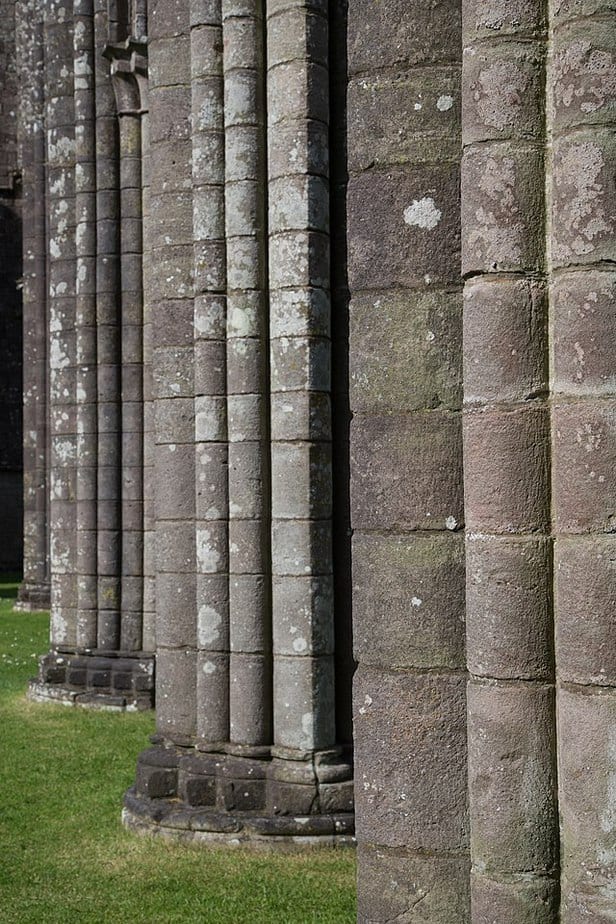
Dundrennan Abbey. Photo by Tom Parnell from Scottish Borders, Scotland – Wikimedia Commons
The last stages of the monastery’s existence are better charted: in 1529 the abbey buildings were reputedly in a state of collapse, and at the Reformation in 1560 the convent comprised at least twelve monks.
The ownership of the abbey and its estate was fully secularised in 1606 when it was formed into a lordship for John Murray, later 1st Earl of Annandale.
6. Dundrennan demands an effort of imaginative reconstruction

Dundrennan Abbey. Photo by Astrid Horn – Wikimedia Commons
Like many monastic ruins, Dundrennan demands an effort of imaginative reconstruction. The gateway through which the visitor enters the abbey precincts used to be the central doorway at the west end of an 8-bay aisled nave, now reduced mainly to its foundations.
Those portions that survive practically to full height are the north and south transept and adjacent portions of the unaisled chancel. These tell us that the first church was two-storeyed, incorporating a range of clerestorey (upper level) windows.
7. Giant three-bay arcades gave access to the chapels

Dundrennan Abbey. Photo by Dr. Neil Clifton – Wikimedia Commons
The crossing, the eastern walls of the transepts, and the chapels behind them were then remodeled in the last quarter of the 12th century. Giant three-bay arcades gave access to the chapels which were redesigned with rib-vaulted ceilings; above the arcades, a triforium (middle) stage was introduced, the reframed and spacious effect being a step further away from original ascetic ideals.
Primary and secondary work alike was wrought in ashlar masonry of local extraction.
8. The Dundrennan possessed a grand aisled and vaulted interior
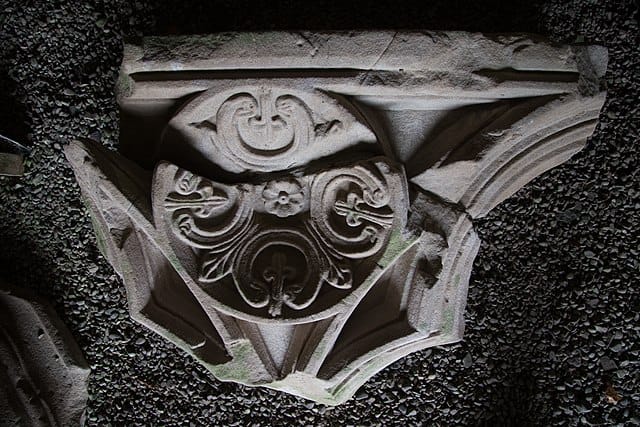
Dundrennan Abbey. Photo by Tom Parnell from Scottish Borders, Scotland – Wikimedia Commons
Of the claustral buildings, only parts of the east and west ranges are now clearly visible. Their chief glory is the late 13th-century arcaded frontage of the chapter house which has a cusped doorway and flanking two-light windows.
It possessed a grand aisled and vaulted interior, sub-divided into twelve vaulted compartments.
9. Parts of the cloister arcade are among the architectural fragments housed in the vaults

Dundrennan Abbey. This Cistercian abbey was founded in 1142, built just as the Gothic style came into fashion. By the 16th Century, the community of monks was diminishing. In 1568 Mary Queen of Scots spent her last night in Scotland here. It fell into ruins and is now preserved by Historic Scotland. Photo by David Hawgood- Wikimedia Commons
The west range, like that at Glenluce originally provided all the accommodation and services required by the community of lay brothers, but at a late stage was rebuilt to form a series of vaulted cellars.
Parts of the cloister arcade are among the architectural fragments housed in the vaults.
Early and mainly abbatial grave slabs, including those with matrices for brasses, have been set into the renewed floor of the chapter house.
10. A tomb recess at the north end of the north transept contains a mutilated effigy of a knight
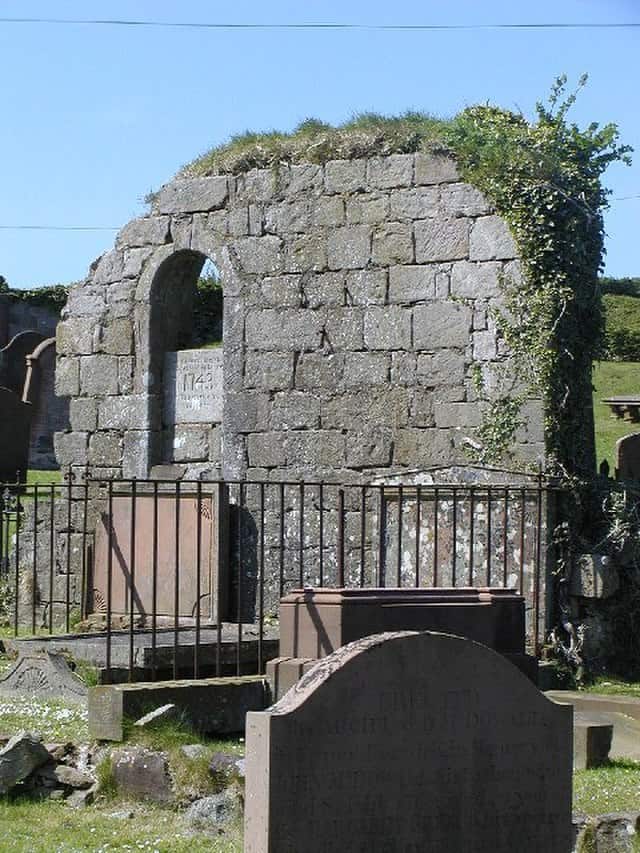
Rerrick Kirk was originally built in the ninth century. It was probably rebuilt when the nearby abbey was founded at Dundrennan, just over the hill; and was abandoned in the nineteenth century when new kirks were built in the villages of Dundrennan and Auchencairn. Photo by Simon Brooke – Wikimedia Commons
Two other monuments found in the chapter house, one an effigy of an abbot and the other (dated 1480) commemorating a cellarer, have been mounted in a recess, formerly a doorway, at the north-west end of the nave.
A tomb recess at the north end of the north transept contains a mutilated effigy of a knight, possibly of 13th-century date, and said to represent Alan of Galloway.
Planning a trip to Paris ? Get ready !
These are Amazon’s best-selling travel products that you may need for coming to Paris.
Bookstore
- The best travel book : Rick Steves – Paris 2023 – Learn more here
- Fodor’s Paris 2024 – Learn more here
Travel Gear
- Venture Pal Lightweight Backpack – Learn more here
- Samsonite Winfield 2 28″ Luggage – Learn more here
- Swig Savvy’s Stainless Steel Insulated Water Bottle – Learn more here
Check Amazon’s best-seller list for the most popular travel accessories. We sometimes read this list just to find out what new travel products people are buying.









